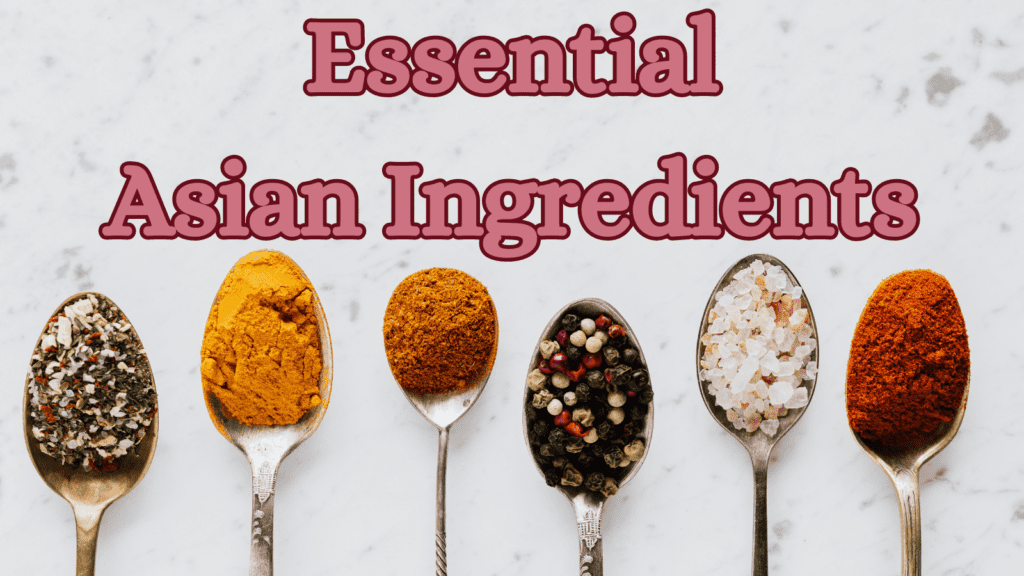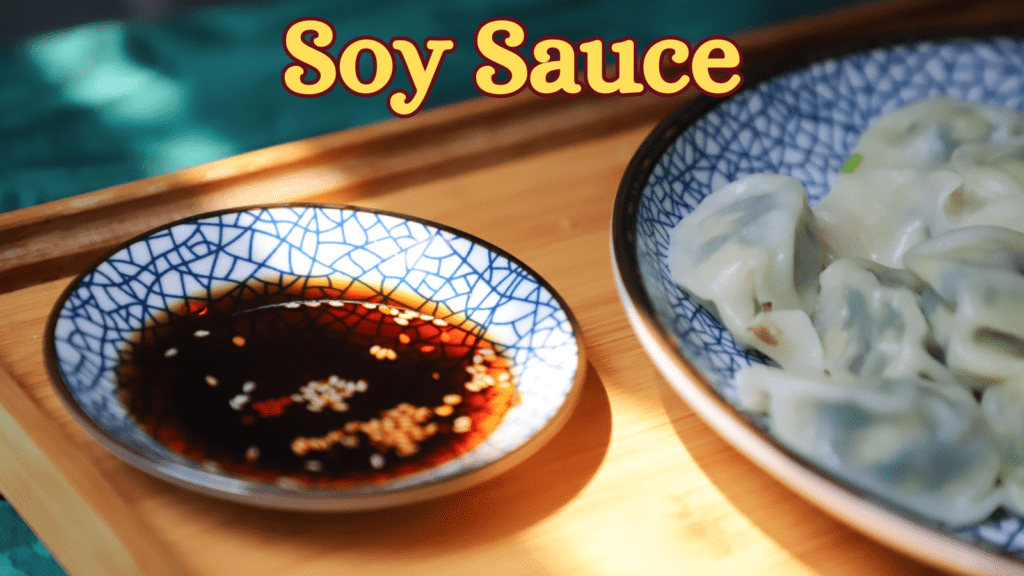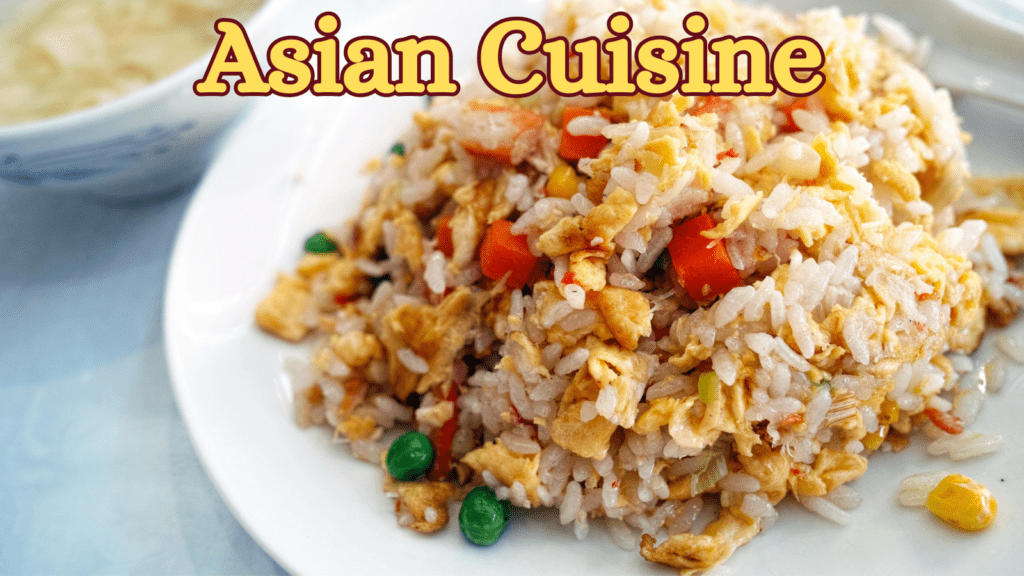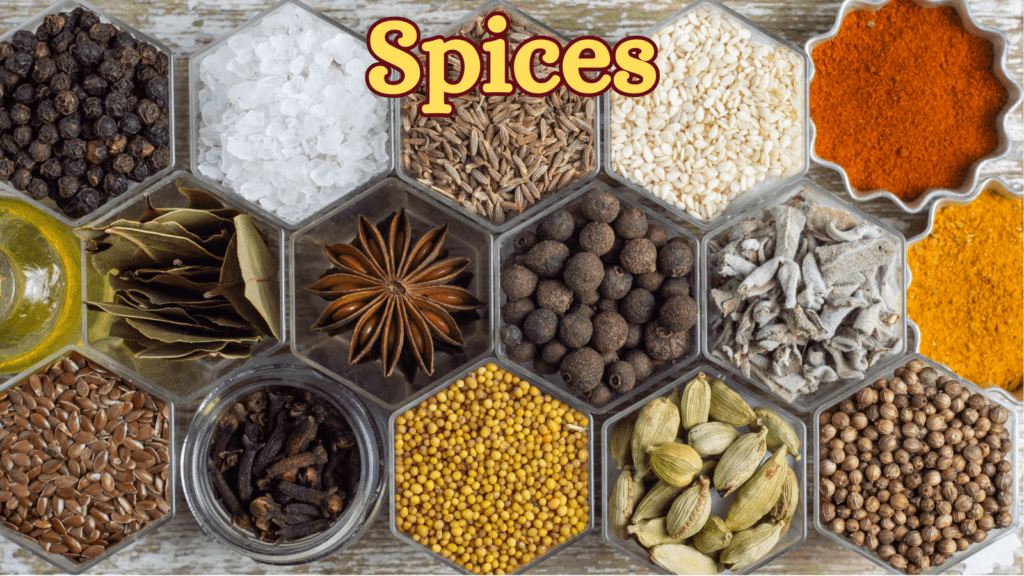Disclaimer: This post may contain affiliate links which means I may receive a small commission from purchases made through links. However, these are products that I would wholeheartedly recommend to my family and friends regardless if I make a small commission at no cost to you as a consumer.

Introduction to Asian Cuisine
Asia is a vast continent with diverse culinary traditions, offering an incredible variety of flavors, ingredients, and cooking techniques. The tastes, smells, and textures of Asian food have captured the hearts of food lovers all around the world.
To recreate these mouth-watering dishes at home, having a well-stocked pantry with essential Asian ingredients is a must. In this extensive guide, we will delve into the unique flavor profiles of some popular Asian cuisines and provide you with an in-depth list of ingredients that every home cook should have in their kitchen.
With a comprehensive understanding of these ingredients, you’ll be well-equipped to explore and create an array of amazing Asian dishes from the comfort of your own home.
The popularity of Asian cuisine has skyrocketed in recent years, thanks to the internet, global food trends, and the increasing availability of ingredients in local stores. Whether you’re a beginner or a seasoned cook, having the right ingredients at your disposal will allow you to create dishes that transport you to different parts of Asia, from the bustling streets of Bangkok to the serene landscapes of Kyoto.
The Importance of Asian Ingredients

Flavors and Aromas
Asian cuisine is known for its complex and unique flavors, with a focus on the balance of sweet, salty, sour, and umami. The right ingredients can elevate a dish to new heights and transport you on a culinary adventure. Understanding the basics of Asian cooking and having the essential ingredients in your pantry is key to creating authentic dishes at home.
Health Benefits
Many Asian ingredients also offer numerous health benefits, as they are packed with vitamins, minerals, and antioxidants. By incorporating them into your meals, you can create flavorful dishes that also contribute to a healthy lifestyle.
Cultural Significance
Asian ingredients have a deep cultural significance, as they have been used for thousands of years in various countries across the continent. Cooking with them allows you to explore the rich history of Asian cuisine and pay homage to traditional flavors and techniques.
Flavor Profiles of Popular Asian Cuisines

Chinese Cuisine
Chinese cuisine is vast and varied, with each region boasting its unique flavors and cooking techniques. However, a common thread in Chinese cooking is the focus on balancing various tastes, such as salty, sweet, sour, bitter, and umami. Some ingredients that are quintessential to Chinese cuisine include:
- Soy sauce
- Ginger
- Garlic
- Green onions
- Sesame oil
- Hoisin sauce
- Oyster sauce
- Black bean sauce
- Fermented tofu
Japanese Cuisine
Japanese cuisine emphasizes simplicity, minimalism, and the use of fresh, high-quality ingredients. The backbone of Japanese cooking is the umami taste, often achieved through the use of dashi, a broth made from kombu (seaweed) and katsuobushi (bonito flakes). Here are some ingredients that are integral to Japanese cooking:
- Soy sauce
- Mirin (sweet rice wine)
- Rice vinegar
- Sake
- Dashi
- Kombu
- Katsuobushi
- Miso
- Wasabi
- Nori
Korean Cuisine
Korean cuisine is characterized by bold, spicy flavors and a strong emphasis on fermented foods. The use of gochujang (red pepper paste) and doenjang (fermented soybean paste) creates depth and complexity in many Korean dishes. Essential Korean ingredients include:
- Gochujang
- Doenjang
- Gochugaru (Korean red pepper flakes)
- Soy sauce
- Sesame oil
- Rice vinegar
- Kimchi
- Perilla leaves
- Fermented seafood (e.g., jeotgal and ganjang gejang)
Thai Cuisine
Thai cuisine is known for its harmonious balance of sweet, sour, salty, and spicy flavors. Dishes often include a mixture of fragrant herbs, pungent sauces, and fresh produce. Some key Thai ingredients are:
- Fish sauce
- Tamarind paste
- Palm sugar
- Thai chilies
- Galangal
- Lemongrass
- Kaffir lime leaves
- Thai basil
- Coriander
- Coconut milk
Vietnamese Cuisine
Vietnamese cuisine is centered around fresh ingredients and the delicate balance of flavors. Dishes often feature a mix of sweet, salty, sour, and spicy tastes. Some of the essential ingredients in Vietnamese cooking include:
- Fish sauce
- Lime
- Rice vinegar
- Fresh herbs (cilantro, mint, basil, and Vietnamese coriander)
- Bird’s eye chilies
- Lemongrass
- Ginger
- Garlic
- Shallots
- Pickled vegetables
Essential Ingredients for Home Cooks
Spices and Seasonings

The vibrant flavors of Asian cuisine rely on a variety of spices and seasonings. Stocking your pantry with these essentials will enable you to recreate many different dishes:
- Star anise – Star anise is a star-shaped spice with a licorice-like flavor, often used in Chinese cooking. It’s a key ingredient in five-spice powder and pairs well with meats like beef and pork. Mostly used to make Asian recipes like beef stew in Asian cuisine to give that deep flavor. (Asian recipe of beef stew usually has more soup, be sure to use it with Chinese noodles.)
- Five-spice powder – Five-spice powder is a classic Chinese spice blend that typically includes star anise, cloves, cinnamon, Sichuan peppercorns, and fennel seeds. With its complex and aromatic flavor profile, five-spice powder is commonly used in marinades, spice rubs, and various meat dishes, adding warmth and depth to Chinese cuisine.
- Sichuan peppercorns – Sichuan peppercorns are unique, providing a tingling, numbing sensation on the tongue. They’re essential for Sichuan cuisine and are often used in spice blends and marinades.
- Ground turmeric – Ground turmeric is a vibrant yellow spice derived from the root of the turmeric plant. Known for its earthy and slightly bitter taste, turmeric is a key ingredient in Indian curry powders, giving them their characteristic golden color. It’s also widely used in Southeast Asian and Middle Eastern dishes, lending flavor and color to stews, rice dishes, and condiments.
- Lemongrass – Lemongrass is a fragrant herb with a subtle, citrusy flavor and aroma. It’s a staple in many Southeast Asian cuisines, especially Thai, Vietnamese, and Indonesian dishes. Fresh lemongrass stalks are often used in soups, curries, and stir-fries, where they impart their refreshing flavor to help balance spicy, savory, and sweet elements.
- Curry paste (red, green, and yellow) – Curry paste is a concentrated blend of herbs and spices, typically including ingredients like chilies, garlic, ginger, lemongrass, and cilantro. Different varieties exist in Thai, Indian, and other Southeast Asian cuisines, each offering a distinct flavor profile. Curry pastes are commonly used as a base for a wide array of curries, lending a depth of flavor, spice, and aroma to the dish.
- Wasabi powder or paste – Wasabi is a pungent, green paste made from the grated root of the wasabi plant, native to Japan. With its strong, sinus-clearing heat, wasabi is traditionally served as a condiment alongside sushi and sashimi, helping to enhance the flavor of the fish and cleanse the palate. It’s also used in dressings, sauces, and other Japanese dishes for a burst of spicy intensity.
- Kaffir lime leaves – Kaffir lime leaves are glossy, dark green leaves from the kaffir lime tree, known for their distinctive citrusy aroma and flavor. They’re widely used in Thai, Cambodian, and Indonesian cuisines, lending a fragrant note to dishes like green curry, tom yum soup, and stir-fries. Fresh or dried kaffir lime leaves can be used whole, finely chopped, or torn, releasing their unique essence to enhance the flavor of various dishes.
- Cardamom – Cardamom is a versatile spice used in both sweet and savory dishes. It has a warm, slightly sweet, and aromatic flavor that pairs well with other spices like cinnamon and cloves.
- Cinnamon – Cinnamon is a warm and sweet spice often used in Indian and Southeast Asian cooking. It can be used in both sweet and savory dishes, adding depth and warmth to curries, stews, and desserts.
- Coriander – Coriander, also known as cilantro, is an herb with a bright, citrusy flavor. The leaves are used as a garnish or in dishes like chicken curry, while the seeds are ground into a spice that can be used in spice blends and dry rubs.
- Cumin – Cumin is a popular spice in Indian, Middle Eastern, and North African cuisine. It has a warm, earthy flavor and can be used whole or ground in spice blends, marinades, and curry dishes.
- Curry Leaves – Curry leaves are an aromatic herb used in South Indian and Sri Lankan cooking. They’re often used to flavor oils and add a unique, slightly bitter taste to dishes.
Sauces and Condiments

Sauces and condiments play a crucial role in building the flavors of Asian dishes. They can be used for marinating, dipping, and seasoning. Be sure to keep the following in your pantry:
- Soy sauce (light and dark) – Soy sauce is a staple in Asian cooking, used for seasoning and adding depth of flavor to many dishes. It comes in different varieties, such as light, dark, and sweet soy sauce. Experiment with different types to find your favorite in this fried rice recipe.
- Oyster sauce – Oyster sauce is a thick, dark sauce made from oyster extract, providing a rich and savory taste. It’s commonly used in stir-fries and as a base for marinades, like in this minced pork with soft tofu recipe.
- Fish sauce – Fish sauce is another essential condiment, adding a distinct umami taste to dishes. It’s made from fermented fish and adds a salty and savory touch to soups, sauces, and marinades. Use it to make this delicious honey garlic chicken dish.
- Hoisin sauce – Hoisin sauce is a thick, sweet, and spicy sauce often used in Chinese cuisine. It’s great for marinating meats, glazing, or as a dipping sauce. Add a touch of hoisin to your next stir-fry for an extra burst of flavor.
- Rice vinegar – Rice vinegar is a mild, slightly sweet vinegar made from fermented rice. It’s perfect for pickling, dipping sauces, and dressings. It also adds a tangy element to dishes like ramen noodles.
- Mirin – Mirin is a sweet Japanese rice wine used as a flavor-enhancer in sauces, marinades, and glazes. With its mild sweetness and low alcohol content, mirin adds depth and balance to dishes like teriyaki, while also helping to tenderize meats and bring out the natural flavors of other ingredients.
- Sesame oil – Sesame oil is a flavorful oil derived from sesame seeds, adding a nutty taste to dishes. It’s ideal for drizzling over finished dishes or for cooking at low heat temperatures. Use it to enhance the flavor of your hot pot soup base.
- Gochujang (Korean red pepper paste) – Gochujang is a savory and spicy Korean condiment made from red chili powder, glutinous rice, fermented soybeans, and salt. Its bold flavor makes it an essential ingredient in many Korean dishes such as bibimbap, bulgogi, and tteokbokki, lending a distinct heat and depth to the overall taste.
- Doenjang (Korean fermented soybean paste) – Doenjang is a thick, umami-rich Korean fermented soybean paste widely used in traditional Korean cuisine. With its earthy, savory taste, doenjang adds complexity to dishes like doenjang jjigae (soybean paste stew) and ssamjang (a dipping sauce for grilled meats and vegetables).
- Tamarind paste – Tamarind paste is derived from the fruit of the tamarind tree and is widely used in Asian, Indian, and Latin American cuisines. With its tangy, sweet, and sour flavor, tamarind paste is a versatile ingredient in dishes like pad Thai, sambar, and various chutneys, adding a distinct tartness that balances and enhances other flavors.
- Sweet chili sauce – Sweet chili sauce is a popular condiment made from red chili peppers, sugar, vinegar, and garlic. Its delightful combination of sweetness and heat makes it a versatile accompaniment for dishes like spring rolls, stir-fries, and grilled meats, as well as a flavorful base for dipping sauces and salad dressings.
- Sriracha sauce – Sriracha sauce is a Thai hot sauce crafted from red chili peppers, garlic, sugar, vinegar, and salt. Known for its fiery kick, sriracha sauce is a versatile addition to a wide variety of dishes, from noodle bowls and soups to sandwiches and eggs, providing a burst of heat and tanginess that livens up any meal.
- Shaoxing cooking wine – Shaoxing wine is a renowned Chinese rice wine used extensively in cooking for its rich, complex flavor. Originating from the Shaoxing region in Zhejiang province, this amber-colored wine boasts a slightly sweet, nutty taste with a hint of savory depth. Shaoxing cooking wine is a key ingredient in many traditional Chinese dishes, such as red-braised meats and stir-fries, where it adds a unique aroma and helps tenderize proteins, while also balancing and enhancing the flavors of other ingredients.
Grains and Noodles
Grains and noodles provide the foundation for many Asian dishes, serving as a base for sauces, proteins, and vegetables. Keep these grains and noodles on hand to create a variety of dishes:
- Jasmine rice
- Sushi rice
- Brown rice
- Basmati rice
- Rice noodles
- Udon noodles
- Soba noodles
- Ramen noodles
- Vermicelli noodles
- Glass noodles (mung bean or sweet potato starch noodles)
Proteins
A variety of proteins are used in Asian cooking, ranging from plant-based options like tofu, tempeh, and seitan, to a wide array of meats and seafood. Keep these proteins in your kitchen to create diverse dishes:
- Tofu (silken, soft, and firm)
- Tempeh
- Seitan
- Chicken
- Pork
- Beef
- Shrimp
- Fish (e.g., salmon, tuna, and cod)
Fresh Produce, Aromatics, and Herbs
Fresh produce adds color, texture, and flavor to Asian dishes. Incorporate these fruits, vegetables, and herbs to create vibrant and flavorful meals:
- Bok choy
- Chinese cabbage
- Thai basil
- Cilantro
- Mint
- Green onions – Green onions, also known as scallions, are used throughout Chinese cuisine as a garnish or for seasoning dishes. They add a mild onion flavor and a burst of color to stir-fries, dumplings, and noodle dishes.
- Bean sprouts
- Ginger – Ginger adds a spicy, zesty flavor to Chinese dishes and is used in many recipes, such as stir-fries, soups, and marinades. Ginger can be sliced, minced, or grated for different preparations.
- Garlic – Garlic is an essential aromatic in Chinese cooking, used in almost every dish to provide a robust, savory taste. It can be minced, crushed, or sliced, depending on the recipe’s requirements.
- Chilies (e.g., Thai bird’s eye, jalapeno, and serrano)
- Lime
- Lemons
- Mango
- Papaya
Storing Your Asian Ingredients
Proper storage is crucial to maintaining the freshness and flavor of your Asian ingredients. Keep spices in airtight containers, away from heat and direct sunlight. Store herbs, like lemongrass and curry leaves, in the refrigerator wrapped in damp paper towels, or freeze them for long-term use. Condiments, like soy sauce and fish sauce, should be stored in a cool, dark place or refrigerated after opening.
Conclusion
Asian cuisine offers a wealth of flavors, textures, and ingredients that can be explored and enjoyed by home cooks of all skill levels. With this in-depth guide to essential Asian ingredients, you are now prepared to embark on a culinary adventure to stock up for your Asian pantry essentials, recreating the tastes of Asia in your very own kitchen. Stock your pantry with these versatile and flavorful ingredients, and experience the joy of creating authentic Asian dishes for yourself and your loved ones. By becoming familiar with the diverse ingredients and cooking techniques used in Asian cuisine, you’ll be able to experiment with and master various dishes, broadening your culinary horizons and tantalizing your taste buds.
Whether you’re a seasoned cook or just starting on your culinary journey, having the right ingredients at your fingertips will make all the difference in your cooking experience. Take the time to learn about the unique properties and uses of each ingredient, and let your creativity run wild as you mix and match flavors to suit your preferences. Remember that cooking should be fun and enjoyable, so don’t be afraid to step out of your comfort zone and try something new. And most importantly, share your creations with family and friends, as there’s nothing better than gathering around the table and savoring the delicious results of your hard work together.
For additional info on health benefits on these ingredients, please see this page.
Frequently Asked Questions (FAQs)
Can I substitute one Asian ingredient for another?
While some substitutions can be made, it’s important to understand that each ingredient contributes unique flavors and textures to a dish. Research possible substitutions before making any changes to ensure the best possible result.
What is the best soy sauce to use in Asian cooking?
There is no one-size-fits-all answer, as different types of soy sauce can be used for different purposes. Light soy sauce is ideal for seasoning, while dark soy sauce is better for braising and adding color to dishes. Experiment with various types to find the one that suits your taste preferences.
Can I substitute regular vinegar for rice vinegar?
While it’s possible to substitute other types of vinegar for rice vinegar, the flavor profiles may differ. Rice vinegar is milder and slightly sweeter compared to other vinegars. If you must substitute, try using apple cider vinegar or white wine vinegar mixed with a bit of sugar.
Are Asian spices easily available in local grocery stores?
Many grocery stores carry a selection of Asian spices and condiments, but availability may vary depending on location. Specialty Asian grocery stores or online retailers typically offer a wider range of products.
Can I make my own Asian sauces and condiments at home?
Absolutely! Many traditional Asian sauces and condiments can be made at home with the right ingredients and recipes, providing you with fresh and authentic flavors.
What are some simple Asian dishes for beginners to try?
Start with straightforward dishes like fried rice, stir-fries, simple noodle dishes, or a basic curry to familiarize yourself with Asian cooking techniques and ingredients.
Are there any vegetarian or vegan options in Asian cuisine?
Yes, there are plenty of vegetarian and vegan options in Asian cuisine. Many dishes can be adapted to suit various dietary preferences by substituting ingredients or using plant-based proteins like tofu and tempeh.
How can I use curry leaves in my cooking?
Curry leaves can be used in various ways. They are often sautéed in oil or ghee to release their aroma before being added to curries, soups, or rice dishes. They can also be ground into a paste or used as a garnish.
Can I grow my own Asian herbs, like lemongrass and kaffir lime leaves?
Yes, many Asian herbs can be grown at home, either in a garden or containers. Lemongrass and kaffir lime trees can be grown in warm climates or indoors with adequate sunlight and care.
What are some essential kitchen tools for cooking Asian cuisine?
A wok, a rice cooker, a sharp chef’s knife, a bamboo steamer, and a mortar and pestle are some helpful kitchen tools for cooking various Asian dishes.





Leave a Reply